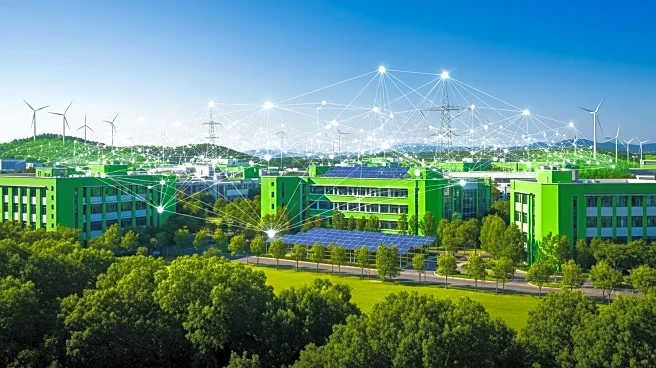What's Happening?
Researchers at National Taiwan University have developed a self-tuning system that converts ambient vibrations into electricity using piezoelectric energy harvesting. The system, led by Professor Wei-Jiun Su, utilizes a 'stretch-mode' design that replaces traditional bending motion with uniform stretching. This design allows a thin PVDF film to flex like a drumhead, generating electricity more efficiently across a wider range of vibrations. A sliding weight within the system adjusts the harvester's natural frequency in response to changes in surrounding motion, enhancing adaptability and power capture.
Why It's Important?
The development of this self-tuning system represents a significant advancement in energy harvesting technology, offering potential applications in various industries. By efficiently converting ambient vibrations into electricity, the system could power small devices and sensors, reducing reliance on batteries and external power sources. This innovation could lead to more sustainable energy solutions and contribute to the growth of renewable energy technologies. The system's adaptability and efficiency make it suitable for use in environments with fluctuating vibration frequencies, expanding its potential applications.
What's Next?
Further research and development are expected to optimize the system's performance and explore commercial applications. The technology could be integrated into smart infrastructure, wearable devices, and remote sensors, enhancing energy efficiency and sustainability. Collaboration with industry partners may accelerate the commercialization process and expand the system's use in various sectors. Researchers will continue to refine the design and explore new materials to improve energy capture and conversion rates.
Beyond the Headlines
The self-tuning system highlights the potential for innovative energy solutions to address global sustainability challenges. The technology's ability to harness ambient vibrations for electricity generation could lead to new approaches in energy management and conservation. It also underscores the importance of interdisciplinary research and collaboration in advancing renewable energy technologies and achieving environmental goals.












